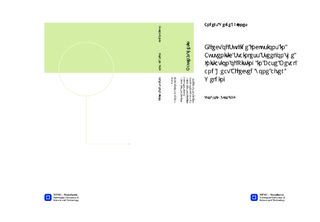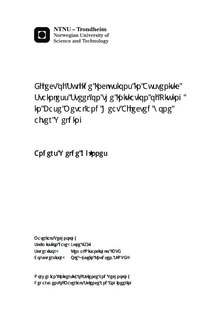| dc.description.abstract | The predominant site for the initiation of pitting on austenitic stainless steel has been shown to be sulfide inclusions and notably the manganese types of sulfides. Dissolution of inclusions has been observed and suggested to be the initial step for pit initiation, though several explanations for the mechanisms causing initiation has been proposed. Regarding welded stainless steels, several microstructural changes have been described and suggested to contribute to the decreased corrosion resistance in the weld zone. An area which has not been investigated much is the contribution of inclusions, in particular MnS inclusions, to the reduced corrosion resistance and the initiation of pitting in the weld zone. In the present work a literature review of the investigations focusing on the initiation of pitting by sulfide inclusions in austenitic stainless steels has been provided. A literature review of investigations focusing on the effects of welding on the microstructure, inclusions and the corrosion properties in the weld zone of austenitic stainless steels has also been provided.Experimental work was performed to obtain results which could be compared to or verify findings and suggestions from the reviewed literature regarding the initiation of pitting by inclusions. Observations of MnS inclusions as the preferential site for pit initiation in austenitic stainless steel was tried recreated. The hypothesis saying that dissolution of MnS inclusions occur prior to the initiation of pitting was also tried verified. It was also performed experiments to obtain results which could give knowledge about the effects of MnS inclusions on the corrosion properties and the initiation of pitting in the weld zone of an austenitic stainless steel. Along with this, the corrosion behaviour and microstructural changes in the weld zone in general and compared with the base metal were studied. A part of the work was also to study the effect of a lacking inert shielding gas during welding.Samples of a 316L stainless steel were first examined in SEM to study the microstructure and to identify inclusions. Then, some samples were welded, followed by SEM examination. Then all samples were polarized electrochemically in synthetic seawater with the purpose of initiating pitting. After the polarization, all samples were examined in SEM again to correlate pitting attack to inclusions and to compare microstructural changes and the corrosion behaviour in the base metal and the weld zone.It was verified that the main initiation site for pitting in the base metal was MnS inclusions. It was indicated that dissolution of the MnS inclusions started the pit initiation process, with the contribution of released compounds from the inclusions. An average percent of inclusions showing an inactive behavior regarding the initiation of pitting was 38 %, verifying similar observations reported in earlier investigations. A nitric acid treatment to remove MnS inclusions improved the pitting resistance significantly.The welding caused the initiation of corrosion at lower potentials when performing electrochemical polarization in synthetic seawater. The corrosion mechanism was probably grain boundary corrosion caused by precipitation of chromium carbides in the grain boundaries. A lacking inert shielding gas during welding did not have any effect on the potential for the initiation of corrosion when comparing two samples welded with and without shielding gas.It was indicated that compositional changes had occurred for MnS inclusions in a certain distance from the fusion line. These changes may have caused the inclusions to be more prone to initiate pitting. Further investigation should be performed to clarify the behaviour of such inclusions, and their susceptibility towards the initiation of corrosion. Grain boundary corrosion in various grades had occurred in the HAZ in certain distances from the fusion line. In a further distance from the fusion line pitting-like corrosion in clusters, possibly induced by chromium depletion after forming chromium oxides combined with a thin oxide film, had occurred. The grain boundary corrosion and the pitting cluster attack are from the experimental results believed to be more important for the failure of the welded stainless steel investigated in this work, than pitting initiated at MnS inclusions changed by the welding process. | nb_NO |

